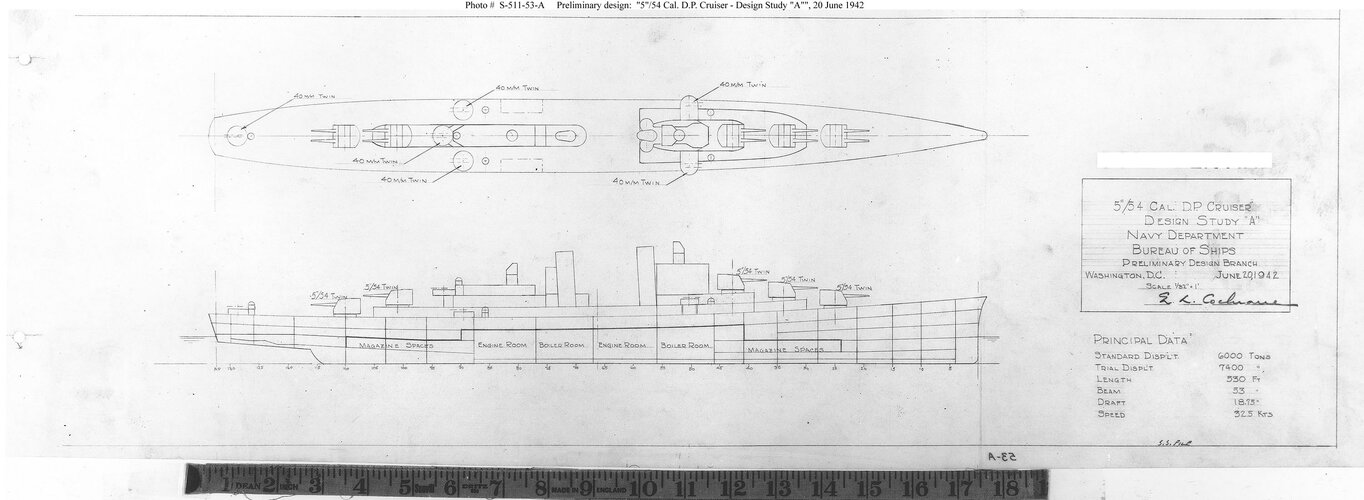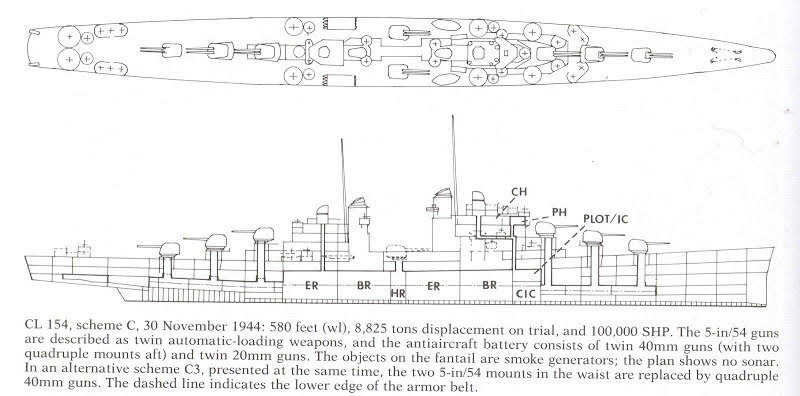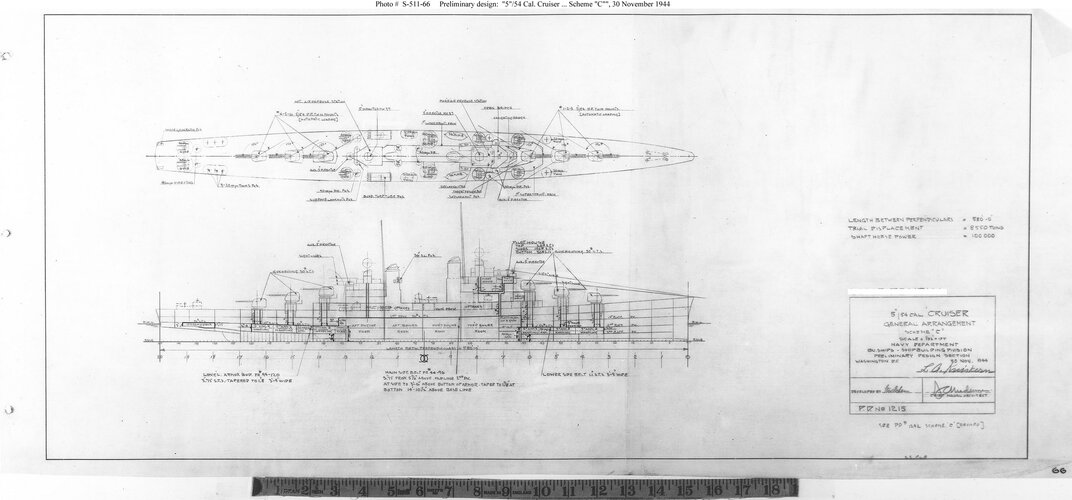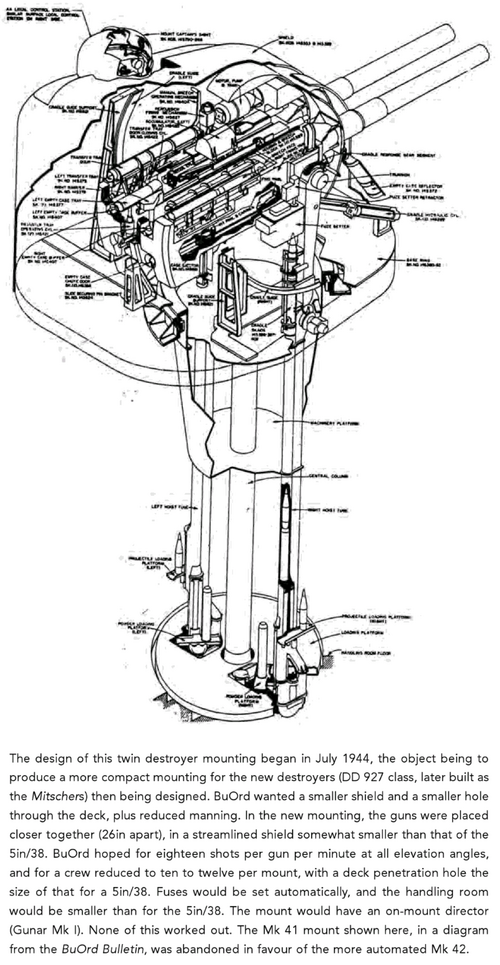- Joined
- 9 October 2009
- Messages
- 19,999
- Reaction score
- 10,511
View: https://www.reddit.com/r/WarshipPorn/comments/x80zhw/3500_x_2100the_proposed_but_never_built_cl154/
Incidentally the basis of the computer game World of Warships' Austin-class cruiser.
If they had been built, they would have likely received the CLAA hull Hull classification symbol from 1949 onwards.
Of interest, from another thread:
Incidentally the basis of the computer game World of Warships' Austin-class cruiser.
If they had been built, they would have likely received the CLAA hull Hull classification symbol from 1949 onwards.
Of interest, from another thread:
Off the direct topic, but there's some interesting stuff in that meeting between King and Forrestal, such as King* saying he doesn't really like the 6" DP cruisers (Worcester class) and would prefer the 5"/54 ones (CL-154 class), despite this meeting happening in the same month the CL-154s were cancelled.
* And Horne, who was VCNO.




